 This story by Edgar Allan Poe is an MS. (manuscript) found in a bottle tossed into the ocean by a dying man. After outlining his once rational, skeptical outlook on life, he relates the story of how, after a series of misadventures at sea, he found himself on a huge ghost galleon speeding under full sail towards the South pole. He walks around the ship unseen by its crew of infirm old men, who become increasingly excited as they approach their doom. Themes include the power of nature, fear, exploration, rational thinking vs. the supernatural, compulsion to document the unexplainable. More…
This story by Edgar Allan Poe is an MS. (manuscript) found in a bottle tossed into the ocean by a dying man. After outlining his once rational, skeptical outlook on life, he relates the story of how, after a series of misadventures at sea, he found himself on a huge ghost galleon speeding under full sail towards the South pole. He walks around the ship unseen by its crew of infirm old men, who become increasingly excited as they approach their doom. Themes include the power of nature, fear, exploration, rational thinking vs. the supernatural, compulsion to document the unexplainable. More…
Archives
The Cask of Amontillado
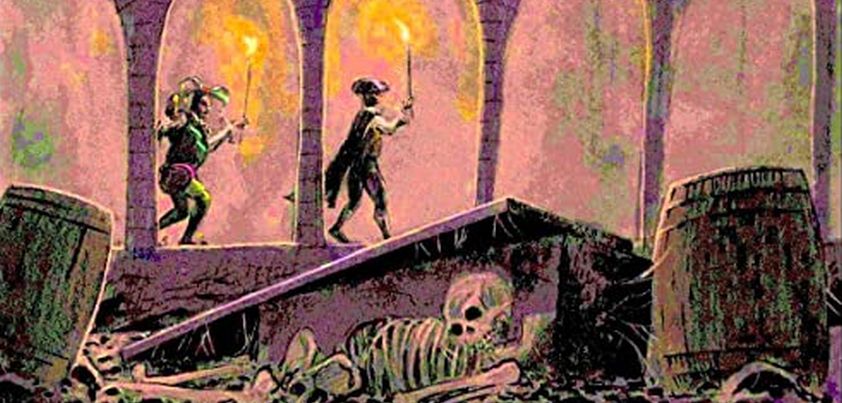 There is not much one can add to what has already been written about this classic tale from Edgar Allan Poe. Widely regarded as one of the world’s greatest Gothic horror stories, it is yet another example of Poe’s ability to supplement situational horror with insights into the twisted minds of his protagonists. The horror aspect of this story about a wine-tasting gone wrong (or right, depending on how you look at it) is enhanced by the ambiguity about the seriousness of the “insult” that lead to the victim’s claustrophobic end. Themes: revenge, trust/deceit, pride, envy, mortality, confession. More…
There is not much one can add to what has already been written about this classic tale from Edgar Allan Poe. Widely regarded as one of the world’s greatest Gothic horror stories, it is yet another example of Poe’s ability to supplement situational horror with insights into the twisted minds of his protagonists. The horror aspect of this story about a wine-tasting gone wrong (or right, depending on how you look at it) is enhanced by the ambiguity about the seriousness of the “insult” that lead to the victim’s claustrophobic end. Themes: revenge, trust/deceit, pride, envy, mortality, confession. More…
The Oval Portrait
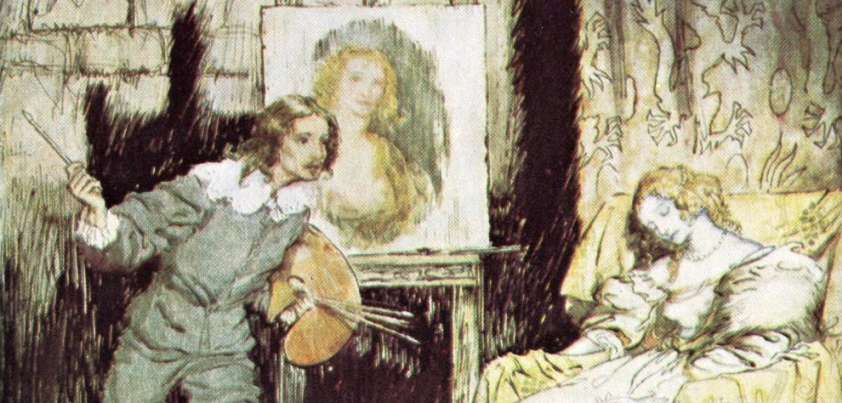 This Edgar Allan Poe story demonstrates the sinister side of how beauty can live on through art. An injured traveler takes shelter in an empty mountain chateau. There are paintings on and around the walls of his room. On his pillow is a book describing them. His eyes fall on the portrait of a beautiful woman that seems a little too lifelike. Disturbed, he finds its entry in the book. The woman’s story suggests that although art can preserve beauty, artistic obsession can destroy it in the making. Themes include art and artistry, rare beauty, love, obedience, obsession and death. More…
This Edgar Allan Poe story demonstrates the sinister side of how beauty can live on through art. An injured traveler takes shelter in an empty mountain chateau. There are paintings on and around the walls of his room. On his pillow is a book describing them. His eyes fall on the portrait of a beautiful woman that seems a little too lifelike. Disturbed, he finds its entry in the book. The woman’s story suggests that although art can preserve beauty, artistic obsession can destroy it in the making. Themes include art and artistry, rare beauty, love, obedience, obsession and death. More…
The Imp of the Perverse
 Like two of our earlier Edgar Allan Poe tales (The Back Cat and The Tell-Tale Heart), this story involves an unreliable, unhinged narrator facing execution for murder trying to account for his crime. He blames his actions on an agent he claims to be in all of us called the “Imp of the Perverse”. The Imp, he argues, is an urge that drives people to do things they shouldn’t for the simple reason that they know it to be wrong. Ironically, the Imp that drove him to murder also drove him to confess. Themes include perverseness, obsession, madness, self-destruction. More…
Like two of our earlier Edgar Allan Poe tales (The Back Cat and The Tell-Tale Heart), this story involves an unreliable, unhinged narrator facing execution for murder trying to account for his crime. He blames his actions on an agent he claims to be in all of us called the “Imp of the Perverse”. The Imp, he argues, is an urge that drives people to do things they shouldn’t for the simple reason that they know it to be wrong. Ironically, the Imp that drove him to murder also drove him to confess. Themes include perverseness, obsession, madness, self-destruction. More…
The Tell-Tale Heart
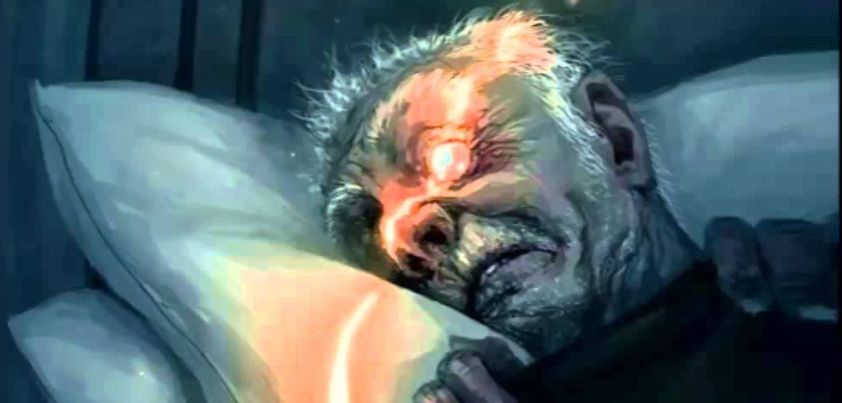 In this Gothic horror story by Edgar Allan Poe, the narrator describes how cleverly he or she has planned and carried out the murder of an old man. The only reason given is fear of what is described as the old man’s ‘vulture eye’. The narrator’s purpose in telling the story is to convince the audience that he or she is not mad. There are a number of ironic aspects to the story, perhaps the greatest being that in trying to prove his or her sanity, the narrator clearly demonstrates the opposite. Themes: mental illness, fear, time, guilt vs. innocence. More…
In this Gothic horror story by Edgar Allan Poe, the narrator describes how cleverly he or she has planned and carried out the murder of an old man. The only reason given is fear of what is described as the old man’s ‘vulture eye’. The narrator’s purpose in telling the story is to convince the audience that he or she is not mad. There are a number of ironic aspects to the story, perhaps the greatest being that in trying to prove his or her sanity, the narrator clearly demonstrates the opposite. Themes: mental illness, fear, time, guilt vs. innocence. More…
Eleonora
 In this atypical Edgar Allan Poe story there is madness, but not the destructive kind; death, but not the gruesome kind; and a spirit, but not a frightening one. Also unusual is Poe’s extensive use of poetic prose. His description of the idyllic valley may be an allusion to the Garden of Eden, leaving readers to wonder if the couple’s incestuous lovemaking beneath the serpent-like trees was the “apple” that destroyed their paradise. Themes: the beauty of nature, innocence, passion, love, death, moving on. Poe’s message: true love endures; despite the loss of a loved one, life must go on. More…
In this atypical Edgar Allan Poe story there is madness, but not the destructive kind; death, but not the gruesome kind; and a spirit, but not a frightening one. Also unusual is Poe’s extensive use of poetic prose. His description of the idyllic valley may be an allusion to the Garden of Eden, leaving readers to wonder if the couple’s incestuous lovemaking beneath the serpent-like trees was the “apple” that destroyed their paradise. Themes: the beauty of nature, innocence, passion, love, death, moving on. Poe’s message: true love endures; despite the loss of a loved one, life must go on. More…
The Man of the Crowd
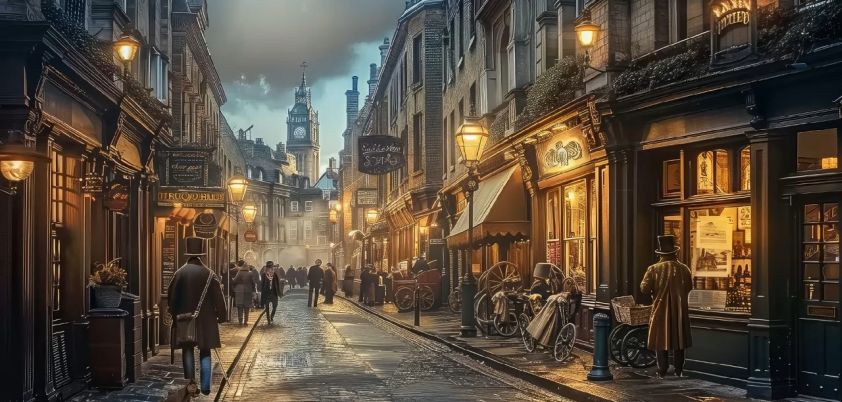 This story by Edgar Allan Poe opens with a man in high spirits after recovering from an illness sitting in a London coffee shop watching people go by in the street. He is absorbed in classifying them by occupation and social class until a “decrepid old man” with a fiendish expression unlike any he has seen before commands his attention. Curious, he follows the old man for twenty-four hours, learning nothing other than that he seems to want always to be part of a crowd. Themes include social class, obsession, curiosity, hidden secrets, urban alienation and loneliness. More…
This story by Edgar Allan Poe opens with a man in high spirits after recovering from an illness sitting in a London coffee shop watching people go by in the street. He is absorbed in classifying them by occupation and social class until a “decrepid old man” with a fiendish expression unlike any he has seen before commands his attention. Curious, he follows the old man for twenty-four hours, learning nothing other than that he seems to want always to be part of a crowd. Themes include social class, obsession, curiosity, hidden secrets, urban alienation and loneliness. More…
The Pit and the Pendulum
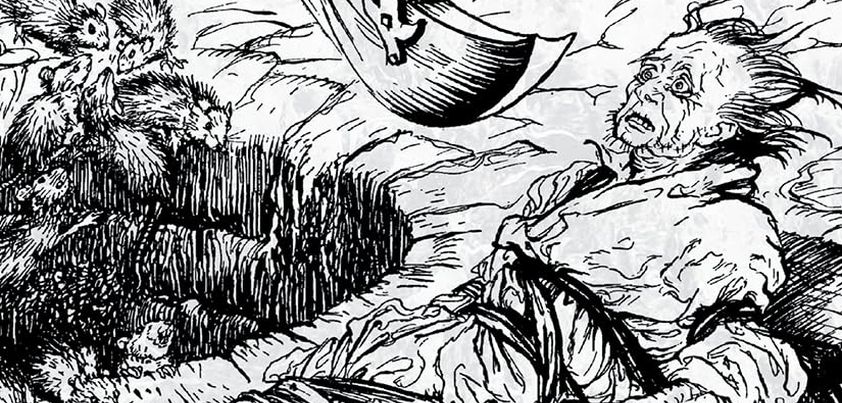 In this story by Edgar Allan Poe, a man in a dreamlike state of consciousness swoons upon being sentenced to death by the Spanish Inquisition. He wakes to find himself tied to a wooden frame in a chamber housing three forms of horrific death: a deep, water-filled pit; a slowly descending, razor-sharp pendulum; and contracting, red-hot walls. After almost giving up and welcoming death, he finds the will to live and devises a plan to escape the pendulum. As the walls close in, an unexpected visitor saves him. Themes include injustice, sadism, fear, time, the will to live, inventiveness, salvation More…
In this story by Edgar Allan Poe, a man in a dreamlike state of consciousness swoons upon being sentenced to death by the Spanish Inquisition. He wakes to find himself tied to a wooden frame in a chamber housing three forms of horrific death: a deep, water-filled pit; a slowly descending, razor-sharp pendulum; and contracting, red-hot walls. After almost giving up and welcoming death, he finds the will to live and devises a plan to escape the pendulum. As the walls close in, an unexpected visitor saves him. Themes include injustice, sadism, fear, time, the will to live, inventiveness, salvation More…
The Purloined Letter
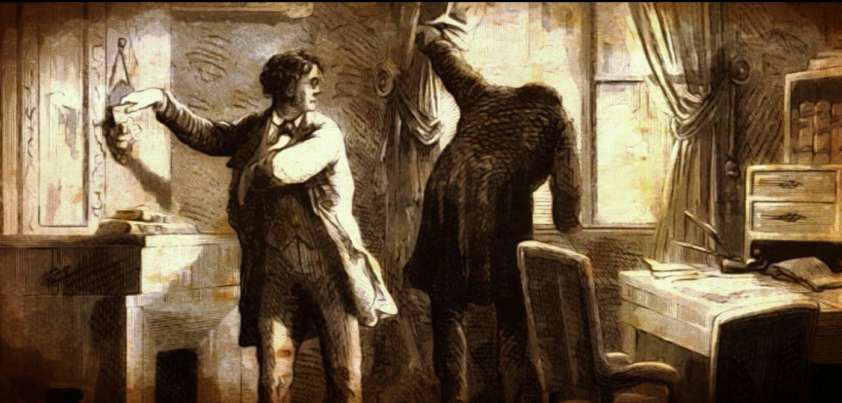 Edgar Allan Poe is famous for his horror stories. However, only about fifteen of his sixty or so stories are of this kind.He is also widely recognized as the “father” of modern detective fiction thanks to his three tales featuring the Chevalier [Sir] Auguste Dupin. In a manner later emulated by the likes of Sherlock Holmes and Hercule Poirot, Dupin succeeds where eminent policemen fail… in this case, simply by recognizing that the best place to hide something important is in plain sight. Themes: blackmail, political manipulation, deception, linear (scientific) vs. lateral thinking. More…
Edgar Allan Poe is famous for his horror stories. However, only about fifteen of his sixty or so stories are of this kind.He is also widely recognized as the “father” of modern detective fiction thanks to his three tales featuring the Chevalier [Sir] Auguste Dupin. In a manner later emulated by the likes of Sherlock Holmes and Hercule Poirot, Dupin succeeds where eminent policemen fail… in this case, simply by recognizing that the best place to hide something important is in plain sight. Themes: blackmail, political manipulation, deception, linear (scientific) vs. lateral thinking. More…
The Masque of the Red Death
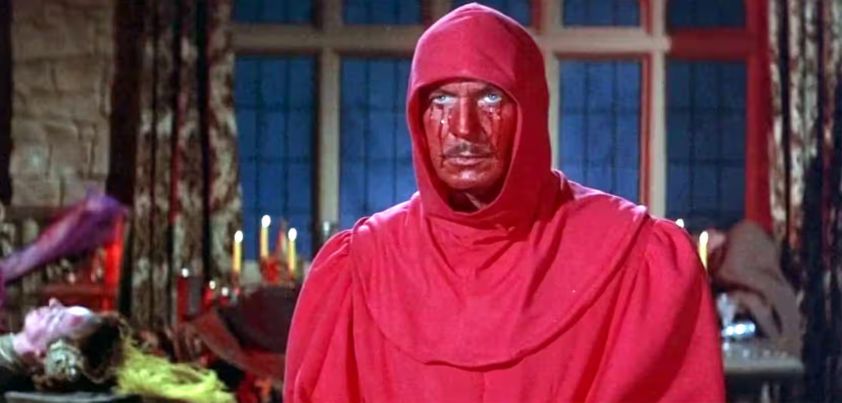 In this Edgar Allan Poe classic an eccentric, possibly mad prince of an unnamed country hopes to evade a plague known as the “Red Death” by locking himself inside a secluded abbey. Being a fun-loving fellow, he brings along an entourage comprising a thousand hale and light-hearted friends from among the knights and dames of his court and an unspecified number of servants and entertainers. They have a jolly time culminating in a lavish masquerade ball where the Red Death incarnate joins the party. Themes include the inevitability of death, fear, social class (abandonment of the common people), foolishness (madness?). More…
In this Edgar Allan Poe classic an eccentric, possibly mad prince of an unnamed country hopes to evade a plague known as the “Red Death” by locking himself inside a secluded abbey. Being a fun-loving fellow, he brings along an entourage comprising a thousand hale and light-hearted friends from among the knights and dames of his court and an unspecified number of servants and entertainers. They have a jolly time culminating in a lavish masquerade ball where the Red Death incarnate joins the party. Themes include the inevitability of death, fear, social class (abandonment of the common people), foolishness (madness?). More…
The Fall of the House of Usher
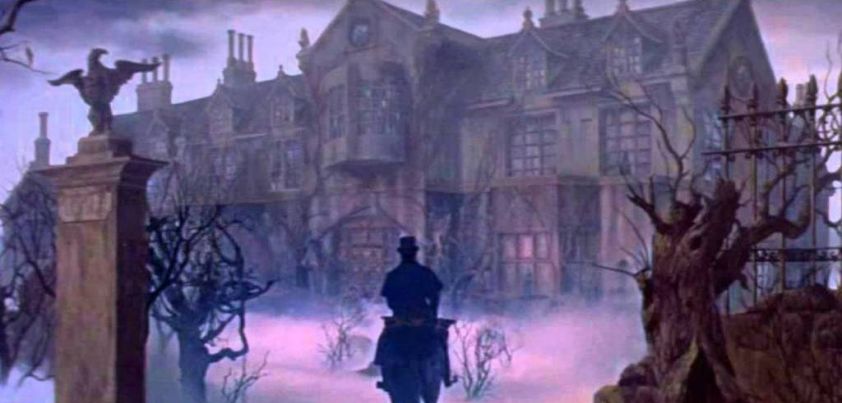 This Edgar Allan Poe story is a masterpiece of the Gothic Horror genre. A man visits a childhood friend in his crumbling family mansion to help him cope with an acute attack of depression. An interdependent relationship exists between the friend, his twin sister and the house (some say a shared soul), which ends in the downfall of all three. The story’s most remarkable feature is the almost total lack of physical action. The feeling of terror and impending doom develops solely from Poe’s descriptions of setting, characters, and atmosphere. Themes: isolation, friendship, fear, madness, the supernatural. More…
This Edgar Allan Poe story is a masterpiece of the Gothic Horror genre. A man visits a childhood friend in his crumbling family mansion to help him cope with an acute attack of depression. An interdependent relationship exists between the friend, his twin sister and the house (some say a shared soul), which ends in the downfall of all three. The story’s most remarkable feature is the almost total lack of physical action. The feeling of terror and impending doom develops solely from Poe’s descriptions of setting, characters, and atmosphere. Themes: isolation, friendship, fear, madness, the supernatural. More…
The Black Cat
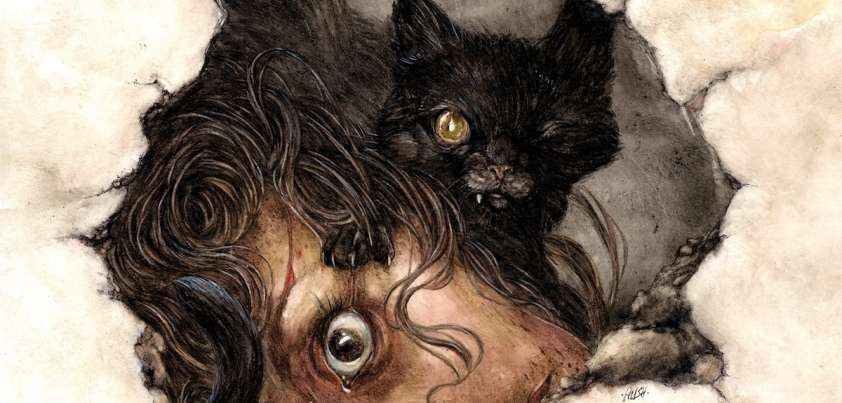 The Stephen Kings of the writing world tend to use external, often supernatural forces as their instruments of terror. With Edgar Allan Poe, the horror generally develops from the tortured mind of man. The protagonist here has lost his mind to alcoholism. Like many alcoholics, he becomes violent when in a drunken state. This is initially directed towards family pets. Extreme cruelty to animals can indicate psychopathic tendencies, and this proves true later in the story when he shows no remorse for any of his actions, including the murder of his wife. Themes: alcoholism, mental illness, brutality, death. More…
The Stephen Kings of the writing world tend to use external, often supernatural forces as their instruments of terror. With Edgar Allan Poe, the horror generally develops from the tortured mind of man. The protagonist here has lost his mind to alcoholism. Like many alcoholics, he becomes violent when in a drunken state. This is initially directed towards family pets. Extreme cruelty to animals can indicate psychopathic tendencies, and this proves true later in the story when he shows no remorse for any of his actions, including the murder of his wife. Themes: alcoholism, mental illness, brutality, death. More…
The Murders in the Rue Morgue
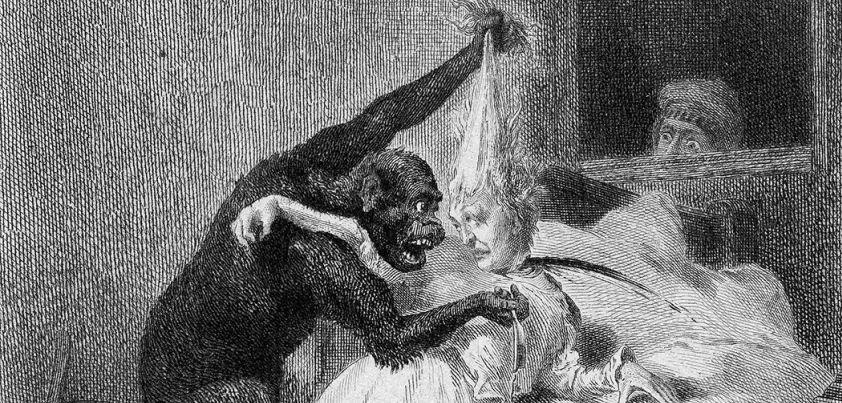 Written in 1841, this rather unlikely story by Edgar Allan Poe is considered one of the world’s first modern detective stories. In a seemingly insoluble locked-room mystery, the wrong man is arrested for the violent murder of two women. In an effort to find the truth, Poe’s amateur detective Dupin demonstrates the importance of “mental analysis” in problem solving and, in the process, shows how an “Ourang-Outang” was able to make a monkey out of the police. Themes include ingenuity (inventiveness) vs. mental analysis (critical thinking), violence, the pursuit of truth, justice. More…
Written in 1841, this rather unlikely story by Edgar Allan Poe is considered one of the world’s first modern detective stories. In a seemingly insoluble locked-room mystery, the wrong man is arrested for the violent murder of two women. In an effort to find the truth, Poe’s amateur detective Dupin demonstrates the importance of “mental analysis” in problem solving and, in the process, shows how an “Ourang-Outang” was able to make a monkey out of the police. Themes include ingenuity (inventiveness) vs. mental analysis (critical thinking), violence, the pursuit of truth, justice. More…